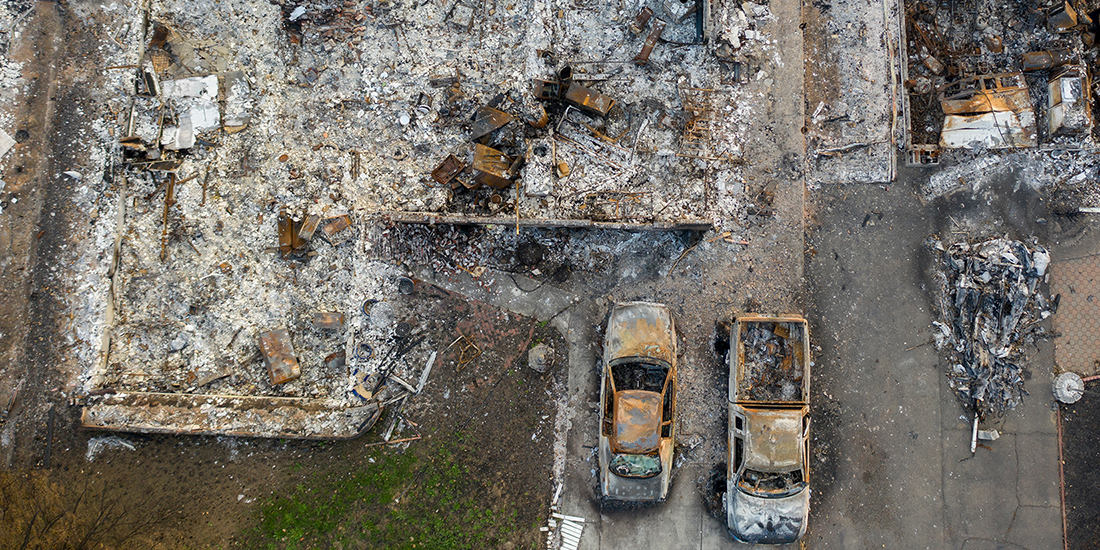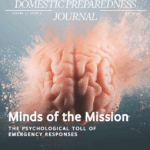Despite significant efforts to increase the capability and resiliency of mobile data technologies since the advent of cellular communications, natural disasters can quickly destroy this increasingly vital link connecting first responders to the general public, with deadly results. During the California wildfires in January 2025, a near-complete loss of cell service in and around affected areas greatly impacted emergency response coordination and prevented some evacuation notices from being sent to people under direct threat from an advancing firestorm. In addition, news broadcasters on scene covering the impacts and spread of the fires in real time reported that they found no cell service to support their operations, although some organizations were able to leverage satellite internet uplink devices to provide updates to their viewers.
Device Connectivity Gaps
In the days immediately following the start of the wildfires, multiple carriers, including Verizon, AT&T, and T-Mobile, leveraged their respective emergency response teams to deploy mobile hotspots, drones, “cells on wheels,” and mobile power generators to restore cellular communications comparable to pre-event capacity. However, despite the availability and readiness of these response teams, deployment of these assets takes time, and cellular service was largely unavailable when receiving life-saving alerts was critical.
Ookla, an organization that provides global network monitoring tools to individuals and businesses, released its data on cellular availability in the affected areas before and immediately after the January wildfires in California. Its tools confirmed a reduction in service availability to the Verizon, AT&T, and T-Mobile data networks, which peaked on January 8, 2025. However, typical service levels were restored on all three networks by January 11.
The near ubiquity of smartphones provides an always-on device capable of receiving precise, geo-located warnings that can save lives in the event of a rapidly developing emergency, such as the California wildfires. However, the complete loss of ground-based cellular infrastructure can render these devices useless for receiving alerts or when seeking help. Fortunately, new solutions capable of connecting to smartphones located almost anywhere on the planet are rolling out now and may provide the only communication channel available when ground-based infrastructure has been lost.
Enhanced Connectivity Solutions
Recently, major smartphone manufacturers have incorporated satellite connectivity into their devices. In 2022, Apple released its first iPhone capable of text messaging via satellite, providing communication capabilities during emergencies or in remote areas with no cellular coverage. In addition, Google’s Pixel 9 models now include emergency satellite features, allowing users to initiate communication with 911 and emergency contacts if land-based networks are unavailable. Both Samsung and Motorola have also rolled out satellite-based text messaging–capable devices focusing on emergency communications. Each solution requires the user to initiate the satellite communications channel—it is not an “always-on” feature.
Notably, in March 2025, the U.S. Federal Communications Commission authorized SpaceX’s Starlink to use higher power levels than previously allowed via satellite to enable direct-to-cell services, in collaboration with T-Mobile. This initiative extends traditional cell phone coverage (including text messaging, voice, and data) via compatible devices. Importantly, these devices will also be capable of receiving traditional emergency alerts, thereby enhancing connectivity to areas where local cell infrastructure is unavailable. Had this capability been available at the start of the January 2025 wildfires, more people in the direct path of the disaster would have received emergency alert messages notifying them to evacuate.
Beyond SpaceX’s Starlink solution, other satellite communications companies are working on similar satellite-to-cell technology that can provide traditional services to smartphones. AST SpaceMobile recently obtained $400 million in funding to accelerate satellite production for its “direct-to-smartphone” network, which is being done in collaboration with AT&T and Verizon in the United States. AST has launched five operational satellites to date, though 40 are required to provide uninterrupted 5G coverage nationwide.
Ongoing Satellite-to-Cell Solutions
CTIA, the U.S.-based telecommunications industry association, estimates that as of 2023, 83% of cell phones in use can receive wireless emergency alerts (WEA), which support real-time, geo-targeted notifications to the public during critical events. This percentage has grown quickly in the past several years as phone manufacturers have adopted the WEA standard, and the public has become more familiar with the value of these alerts. As satellite-to-cell solutions become increasingly available, cell phone makers should rapidly adopt these capabilities. They can provide the missing link between emergency services and the public, regardless of the disaster at hand or the state of land-based, physical infrastructure. Real-time, space-based communications to smartphones represent a level of access and resiliency that can provide critical benefits to users and first responders in the future.

Rodrigo (Roddy) Moscoso
Rodrigo (Roddy) Moscoso is the executive director of the Capital Wireless Information Net (CapWIN) Program at the University of Maryland, which provides software and mission-critical data access services to first responders in and across dozens of jurisdictions, disciplines, and levels of government. Formerly with IBM Business Consulting Services, he has more than 20 years of experience supporting large-scale implementation projects for information technology, and extensive experience in several related fields such as change management, business process reengineering, human resources, and communications.
- Rodrigo (Roddy) Moscosohttps://domesticpreparedness.com/author/rodrigo-roddy-moscoso
- Rodrigo (Roddy) Moscosohttps://domesticpreparedness.com/author/rodrigo-roddy-moscoso
- Rodrigo (Roddy) Moscosohttps://domesticpreparedness.com/author/rodrigo-roddy-moscoso
- Rodrigo (Roddy) Moscosohttps://domesticpreparedness.com/author/rodrigo-roddy-moscoso






